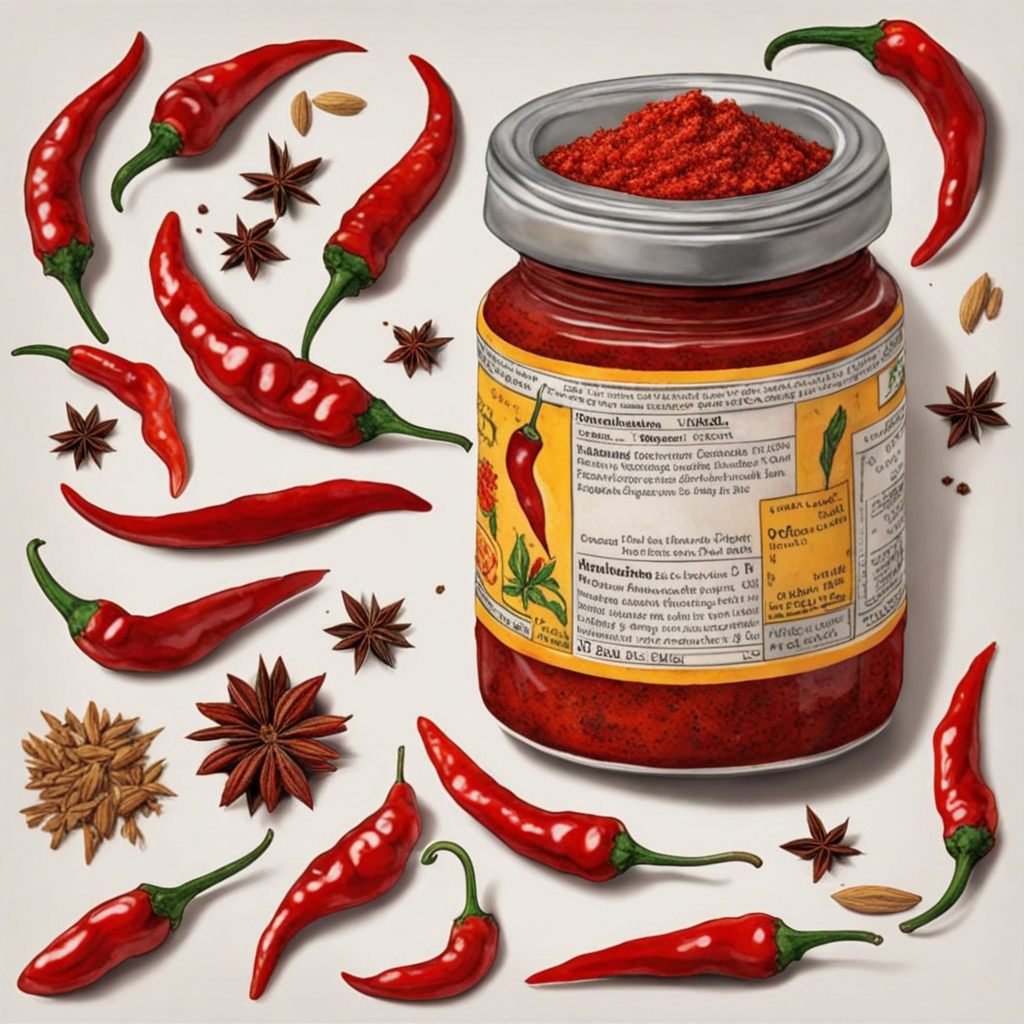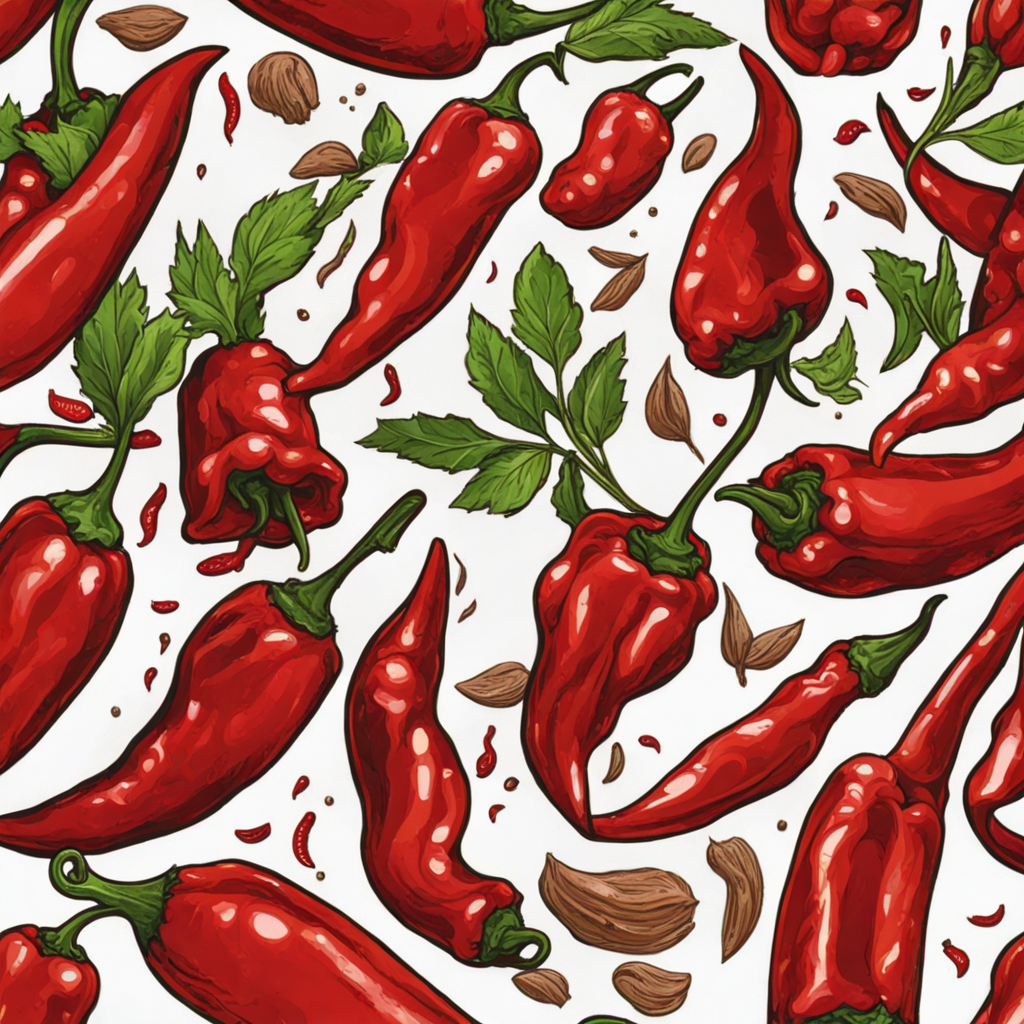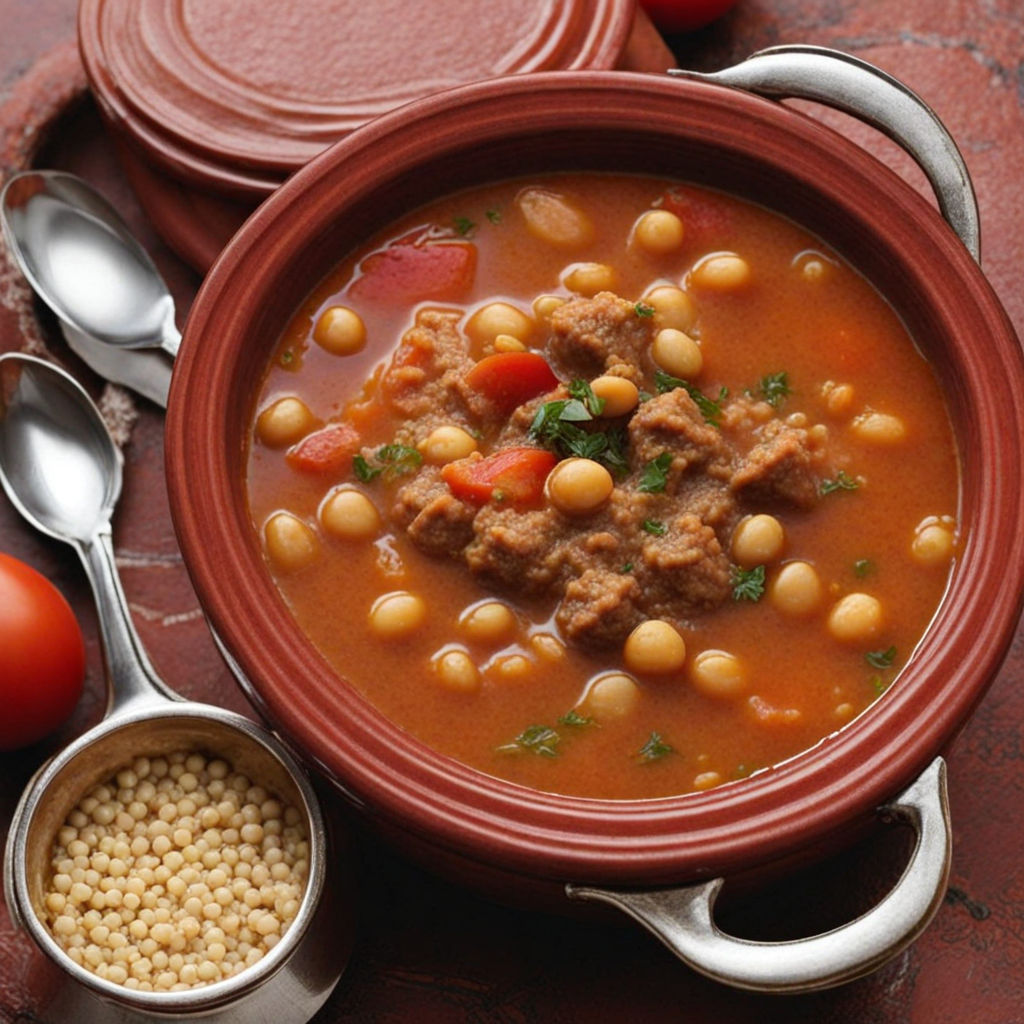Harissa
Harissa is a vibrant and spicy chili paste that hails from Tunisia, known for its bold flavors and aromatic qualities. This versatile condiment is made primarily from roasted red peppers, hot chili peppers, garlic, and a variety of spices such as coriander and caraway seeds. The roasting process enhances the natural sweetness of the peppers, while the spices add depth and complexity, creating a rich and piquant flavor profile that tantalizes the taste buds. The result is a fiery crimson paste that not only brings heat but also a delightful earthiness that can elevate any dish. The unique taste of harissa can be described as both smoky and spicy, with a warming heat that lingers without overwhelming the palate. It is often used to season meats, vegetables, and grains, making it a staple in Tunisian cuisine. Whether slathered on grilled meats, stirred into stews, or mixed into couscous, harissa adds an exciting kick that transforms ordinary meals into extraordinary culinary experiences. Many food lovers appreciate its versatility; it can be used as a marinade, a dipping sauce, or even a flavor booster in soups and dressings. Beyond its culinary uses, harissa also showcases the rich cultural heritage of Tunisia, where it is a beloved ingredient in many traditional dishes. The paste reflects the country's history of spice trade and its Mediterranean influences, making it a perfect representation of Tunisian flavor. As you explore harissa, you’ll discover not just a condiment, but a gateway to the vibrant and diverse world of Tunisian cooking, inviting you to experiment and create dishes that celebrate its bold and captivating flavors.
How It Became This Dish
The History of هريسة (Harissa) from Tunisia: A Culinary Journey #### Origins Harissa, a fiery chili paste, is synonymous with Tunisian cuisine and has roots that stretch back to the rich tapestry of North African history. The origins of harissa can be traced to the Berber people, the indigenous inhabitants of North Africa, who utilized local ingredients to craft sauces and pastes for their meals. The use of chili peppers in harissa is often attributed to the Columbian Exchange, which brought New World crops like chili peppers to the Old World after the arrival of Europeans in the Americas in the late 15th century. By the 16th century, chili peppers had been embraced by North African cultures, including Tunisia, where they became a defining element of local gastronomy. The name "harissa" is believed to derive from the Arabic word "harasa," meaning "to crush" or "to grind." This reflects the traditional method of preparation, where dried red peppers, garlic, and spices are ground together to create a thick, aromatic paste. Complementary ingredients such as coriander, caraway seeds, and olive oil are often added, enhancing the complexity of flavors. #### Cultural Significance Harissa is much more than just a condiment in Tunisia; it is a cultural icon that represents the country’s culinary identity. It is a staple in Tunisian households and restaurants alike, often accompanying various dishes, from stews to grilled meats and couscous. Its significance is amplified during festive occasions, where it can be found as part of celebratory meals, symbolizing hospitality and the warmth of Tunisian culture. In the broader context of North African cuisine, harissa embodies the fusion of various cultural influences that have shaped the region over centuries. The Arab, Berber, Ottoman, and French influences have all contributed to the complexity of flavors found in Tunisian dishes, with harissa serving as a common thread that ties these diverse culinary traditions together. Moreover, harissa is also a symbol of resistance and resilience. During periods of colonization and upheaval, traditional foods like harissa became a means of preserving cultural identity and asserting autonomy. By maintaining their culinary practices, the Tunisian people fostered a sense of belonging and continuity amidst external pressures. #### Development Over Time As Tunisia evolved through the ages, so too did harissa. Initially, the paste was likely a simple blend of crushed peppers and garlic. However, as trade routes expanded and culinary techniques refined, harissa began to undergo variations that reflected local tastes and available ingredients. The introduction of new spices and herbs transformed harissa into a versatile condiment that could be tailored to suit different palates. In the 19th and early 20th centuries, as Tunisia became a French protectorate, the culinary landscape began to shift. French influence introduced new cooking techniques and ingredients, leading to the incorporation of harissa into a broader array of dishes. The paste became a key component in many recipes, used to marinate meats or flavor stews. This period also saw the emergence of harissa as a commercial product, with local producers packaging it for sale in markets, making it accessible to a wider audience. With the advent of globalization in the late 20th century, harissa began to gain recognition beyond the borders of Tunisia. As the diaspora spread, so too did the culinary traditions associated with it. Tunisian immigrants brought harissa to new lands, introducing it to a global audience and inspiring fusion dishes that incorporated the paste into international cuisines. In areas with significant North African populations, such as France and parts of the United States, harissa became a trendy ingredient in contemporary cooking. In recent years, there has been a resurgence of interest in traditional foods, with many chefs and home cooks seeking to explore authentic culinary practices. This has led to a renewed appreciation for harissa, with artisanal producers crafting unique variations that celebrate local ingredients and traditional methods. These modern takes on harissa often explore different types of peppers, such as smoked or roasted varieties, and incorporate additional spices like smoked paprika or cumin, further enhancing the flavor profile. #### Harissa Today Today, harissa is available in various forms, from jars of paste to powdered mixes, making it more accessible than ever. It can be found in grocery stores around the world, and its versatility has allowed it to become a sought-after ingredient for chefs and food enthusiasts alike. Harissa is no longer confined to Tunisian cuisine; it has found its way into Mediterranean, Middle Eastern, and even fusion dishes, being used in everything from salad dressings and dips to marinades and sauces. The rise of the internet and social media has also played a significant role in popularizing harissa. Food bloggers and influencers have introduced innovative recipes that incorporate harissa, showcasing its adaptability and inviting home cooks to experiment with the paste in their own kitchens. This digital exposure has not only broadened the audience for harissa but has also facilitated a greater appreciation for Tunisian culture and gastronomy. Moreover, harissa has become a symbol of culinary authenticity and heritage, with many chefs and producers emphasizing traditional preparation methods and sourcing local ingredients. In Tunisia, the production of harissa remains a point of pride, with artisanal producers often following recipes passed down through generations. This commitment to tradition ensures that the essence of harissa—the combination of spice, flavor, and cultural significance—remains intact. #### Conclusion Harissa's journey from its ancient Berber roots to its modern-day status as a beloved condiment illustrates the dynamic nature of food and its ability to transcend borders. As a symbol of Tunisian culture and identity, harissa encapsulates the rich history and diversity of North African cuisine. Its development over time reflects not only the changes in culinary practices but also the resilience of a people who have embraced their culinary heritage while inviting the world to partake in their flavors. In every spoonful of harissa lies a story—a story of tradition, adaptation, and an enduring love for food that continues to bring people together across cultures and generations.
You may like
Discover local flavors from Tunisia







